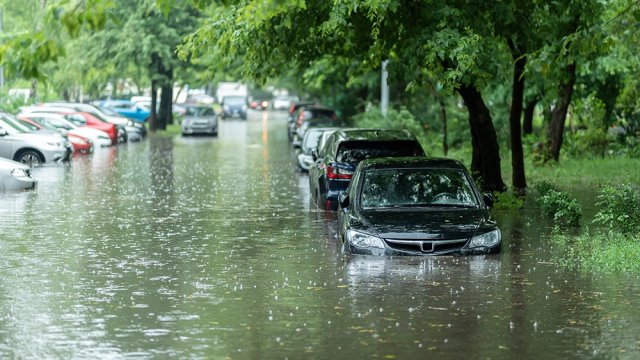Climate Resiliency and Green Infrastructure
Climate change is affecting us now. As various parts of the country become drier, wetter, or hotter, green infrastructure can help improve communities' climate resiliency today and into the future.
Parts of the country are more at risk from climate change impacts due to both climate and non-climate factors. In particular, communities more exposed to climate hazards and those with fewer resources to prepare and respond face disproportionate risks. These groups can include, but are not limited to, communities of color, Indigenous populations, and low-income households. Communities with fewer resources may also be less likely to already have green infrastructure installed in their community that can help mitigate climate hazards. To effectively serve all communities, consider ways that green infrastructure can benefit and meaningfully involve communities with environmental justice concerns.
Learn more about types of green infrastructure that can help communities prepare for and manage these effects of climate change:
-
Mitigate Flooding

Slow and reduce stormwater runoff and protect floodplains.
-
Prepare for Drought

Help reduce stress on local water supplies.
-
Reduce Heat Islands

Shade building surfaces and deflect solar radiation.
-
Protect Coasts

Help reduce coastal erosion and storm impacts.
-
Lower Building Energy Demands

Help keep buildings comfortable.
-
Spend Less Energy Managing Water

Control stormwater more efficiently.
Find more technical resources from EPA’s green infrastructure technical resource library.
More Resources
Databases:
- EPA Smart Growth Fixes for Climate Change Adaptation and Resilience — A policy guide that can help local government officials, staff, and boards find strategies to prepare for climate change impacts through land use, green infrastructure, and green building policies.
- Georgetown Climate Center's Adaptation Clearinghouse — The clearinghouse serves as a resource to all states, assisting state policymakers, resource managers, academics, and others working to help communities adapt to climate change.
Guides:
- Disaster Resilient Design Concepts — This guide provides a set of disaster-resilient design solutions than can help communities address natural hazards, adapt to climate change, and achieve a range of economic, environmental, and equity goals. It also includes links to multiple resources.
- Incorporating Nature-Based Solutions Into Community Climate Adaptation Planning (pdf) — This guide from the National Wildlife Federation provides an overview of nature-based approaches to address and plan for the effects of climate change.
Tools:
- EJScreen — An environmental justice mapping and screening tool that provides EPA with a nationally consistent data set and approach for combining environmental, demographic, and socioeconomic indicators. EJScreen users choose a geographic area; the tool then provides environmental, demographic and socioeconomic information for that area.
- Enviro Atlas — An interactive web-based tool providing geospatial data, easy-to-use tools, and other resources that decision-makers can use to inform policy and planning in the places where people live, learn, work, and play.
- Regional Resilience Toolkit — EPA recently released its this toolkit for addressing regional resilience planning needs to address hazards from natural disasters. EPA is working with a handful of pilot communities to help them utilize the toolkit and increase their resiliency.
- Risk Factor — An online tool created by the nonprofit First Street Foundation where users can put in their address and easily identify climate risks hazards that can potentially affect them.
- Temperate Adaptation Planner — An International Council for Local Environmental Initiatives (ICLEI) tool to guide local government users through the Five Milestones for Climate Adaptation planning. It is available as part of ICLEI's Climate Resilient Communities Program.
- The U.S. Climate Resilience Toolkit — A website that compiles resources from across the federal government to help people find and use tools and information to build climate resilience.
- The Climate Explorer — This National Oceanic and Atmospheric Administration tool shows anticipated changes in climate conditions across the United States.
Webinars:
- Lessons Learned Integrating Water Quality and Nature Based Approaches for Hazard Mitigation Webinar and Building Resilient Communities with Green Infrastructure and Hazard Mitigation Planning Webinar — EPA and the Federal Emergency Management Agency (FEMA) worked with three regions—Ashland, Oregon; Albany, New York; and the Commonwealth of Massachusetts—to pilot projects that have successfully integrated watershed planning, green infrastructure, and source water protection into FEMA hazard mitigation plans.
